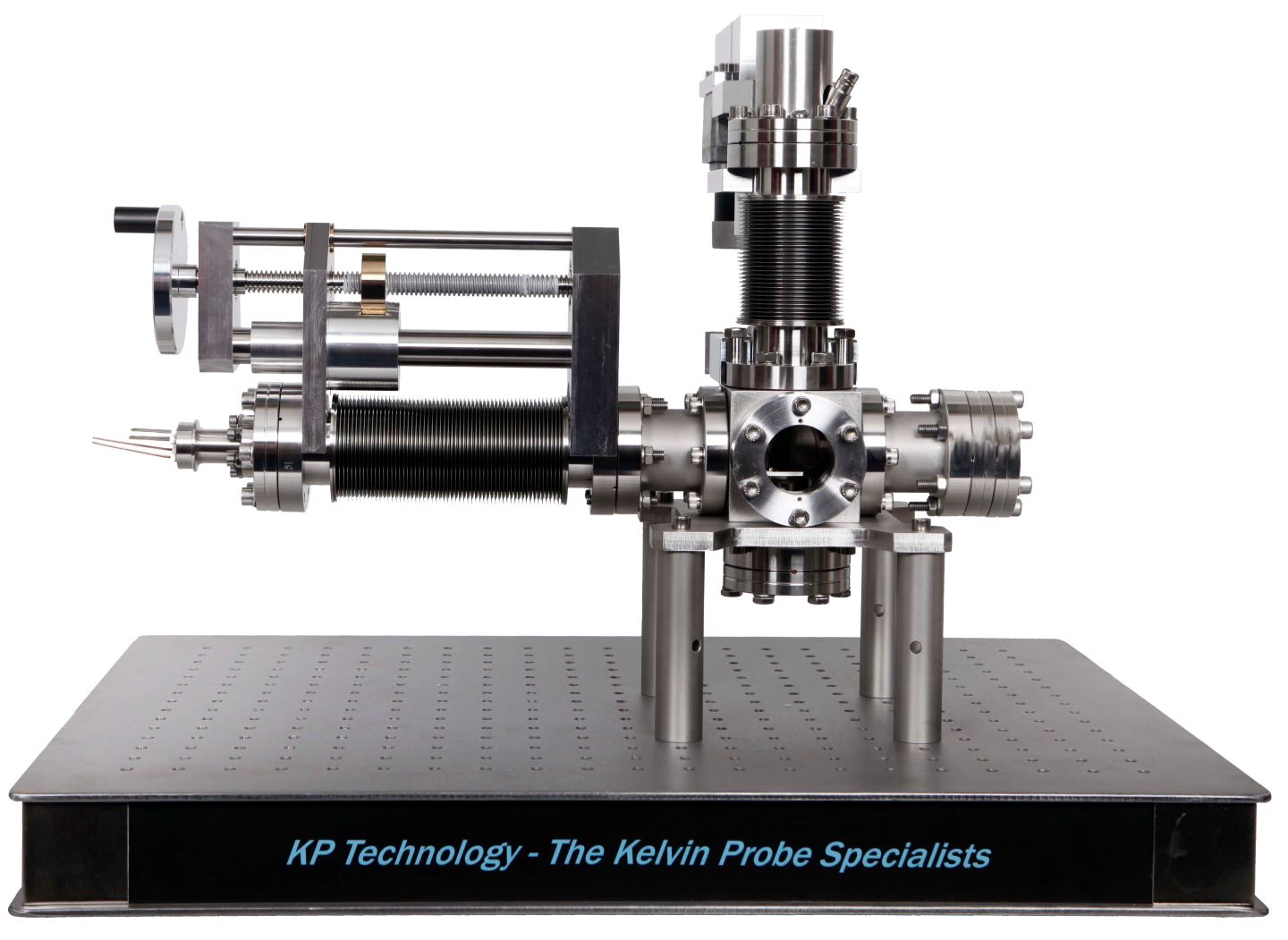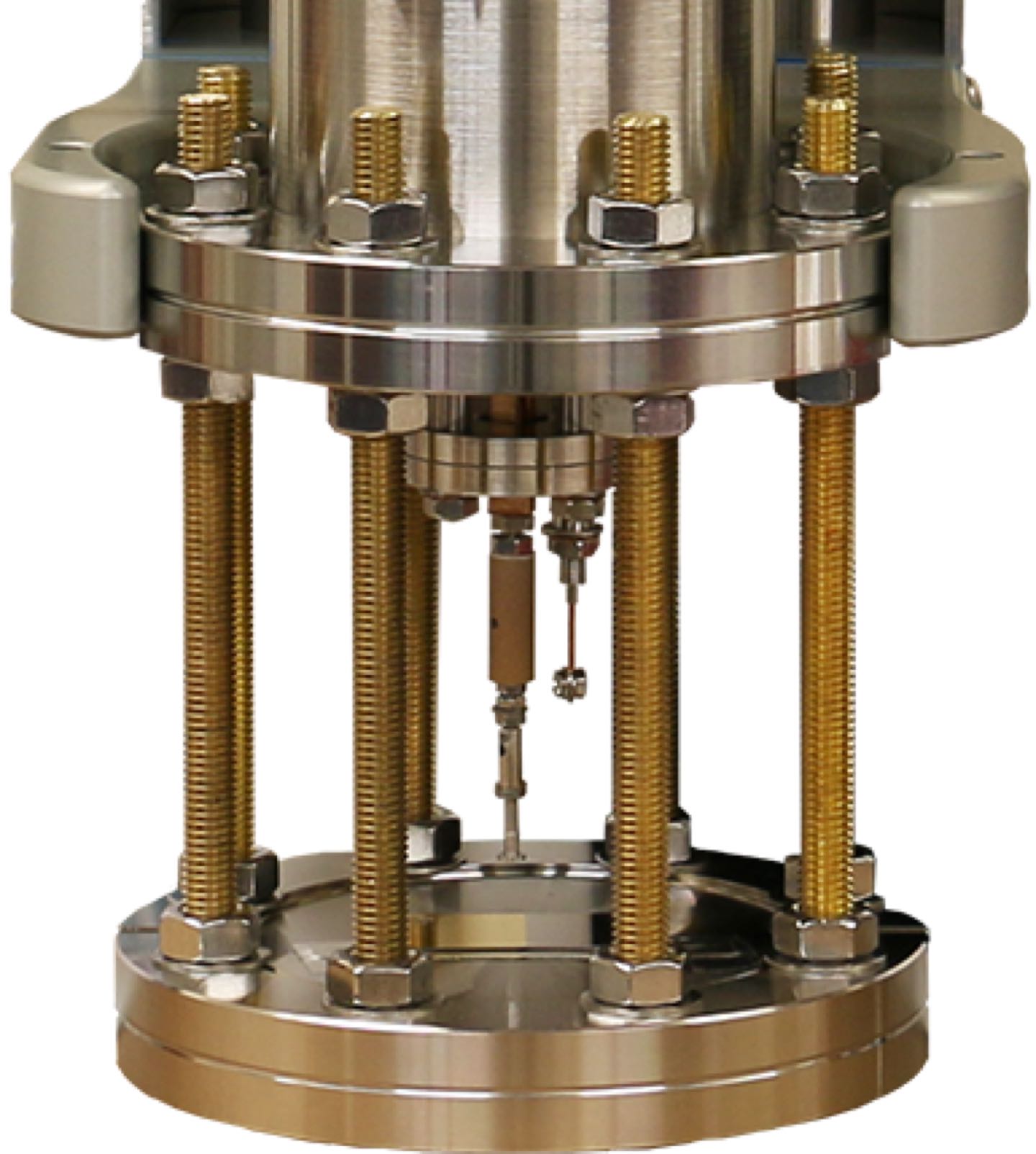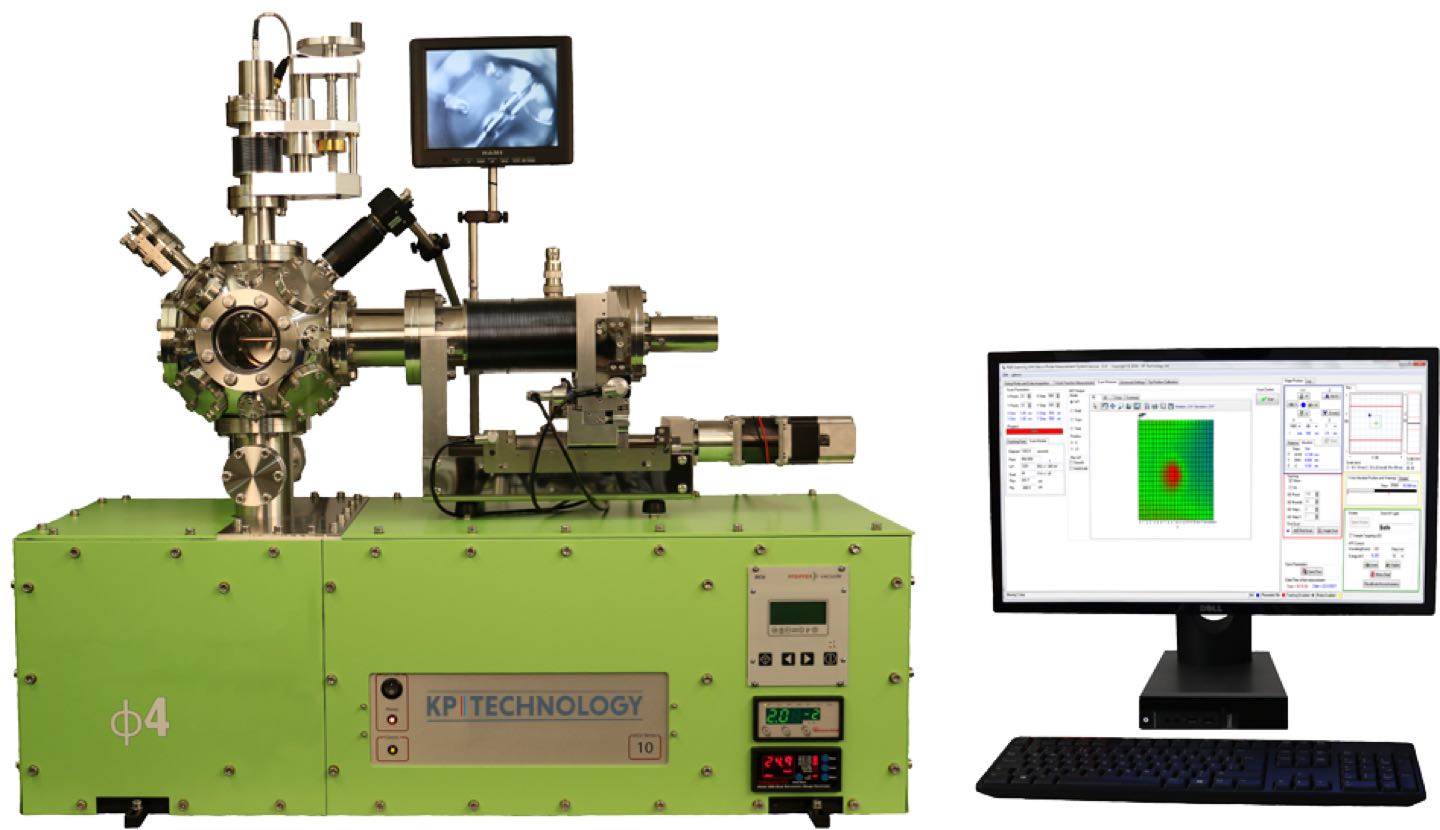Ultra-High Vacuum
KP Technology offer a range of Kelvin Probes that work under Ultra-High Vacuum conditions, choose from single-point or scanning probes to add to your existing vacuum chamber, customise the UHV Corner Cube or consider the newest addition to the range, the Ф4 Ultra-High Vacuum Scanning Kelvin Probe system.
All our Kelvin Probes are built with the unique Baikie System to ensure reliable and repeatable measurements to support your research.

Ultra-High Vacuum Kelvin Probe
Our Ultra-high Vacuum Kelvin Probes give the user full access to work function and contact potential difference (CPD) measurements under vacuum. Each system comes with a high-quality, manual, or motorized translator that enables reliable and accurate tip-to-sample positioning, and the unrivalled tracking system always holds the tip separation constant during the measurement. Even under vacuum, the work function resolution is 1 - 3 meV.
The dedicated software allows full digital control of all parameters to match the exact requirements of the sample under investigation. The recorded data is easily exportable to analysis software.
The UHV Kelvin Probe can be mounted to the user's existing UHV chamber or KP Technology offers an elegant UHVKP cell system (UHVKP Corner Cube) that can be used for ambient, UHV or gaseous measurements. This cell is completely modular, and a host of additional extras can be added-on.
The latest materials and applications highlighted in published papers includes, solar cells, lead sulfide quantum dots, oxide thin films, silicon terminated diamond, Fischer-Tropsch synthesis and cerium oxide films.
Download the product brochure for more information on the Ultra-High Vacuum Single-Point Kelvin Probe range, including technical specifications, example measurements and add-on options.

Ultra-High Vacuum Scanning Kelvin Probe
Our Ultra-high Vacuum Scanning Kelvin Probes (UHVSKP2020 and UHVSKP5050) give the user full access to work function (Φ) and contact potential difference (CPD) measurements under vacuum with the ability to scan a sample area of 20 x 20mm or 50 x 50mm respectively. Each system comes with the UHV head unit, tip amplifier (located at the mounting port), digital control unit and host PC with dedicated software. The tip can be retracted 100mm from the sample and approaches normal to the sample. The associated digital electronic unit powers the head unit and provides an interface between the head unit and the data acquisition system. The system comes with a complete user manual, which includes an introduction to work function measurements and a detailed description of the system software, including examples. The work function resolution of the Ultra-High Vacuum Scanning Kelvin Probes is 1-3 meV.
The software allows the user digital control of Probe amplitude and frequency, mean-spacing and tip potential. There is also automatic measurement of the Kelvin Probe signal, work function, signal and work function averaging as well as automatic control of tip to sample mean spacing. Other features include variable scan sizes and 3D charting of the work function data. The data generated can be easily exported to Excel-compatible spreadsheets for further processing.
Download the product brochure for more information on the Ultra-High Vacuum Scanning Kelvin Probe range, including technical specifications, example measurements and add-on options.

Ultra-High Vacuum Ф4 Scanning Kelvin Probe
The Ф4 Ultra-high Vacuum Scanning Kelvin Probe system gives the user full access to work function measurements under vacuum with the ability to alter the temperature from 77 K to 860 K. The Kelvin Probe measurement has resolution of 1 - 3 meV for a 2 mm tip on a conducting sample. The sample is mounted on a plate that is located on a motorized (x, y, z) translator attached to a stainless-steel vacuum chamber. Phi 4 also comes with a photoemission spectroscopy system with a tuneable source (3.4 - 7.0 eV). The deep ultra-violet (DUV) light spot measures approximately 3 x 4 mm. Absolute work function measurements can be obtained with this system in the range of 4.0 - 6.5 eV with an accuracy of 0.05 - 0.1 eV.
The system can be upgraded with surface photovoltage spectroscopy through utilising other ports in the system chamber. Liquid nitrogen is used as the method of cooling the sample and heating is achieved by controllable direct current. Nitrogen gas is used to displace the oxygen to facilitate the use of the photoemission system source. An optical breadboard is used to support the chamber and standard power is required for operation.
Download the product brochure for more information on Ф4 Ultra-high Vacuum Scanning Kelvin Probe, including technical specifications and product features.

